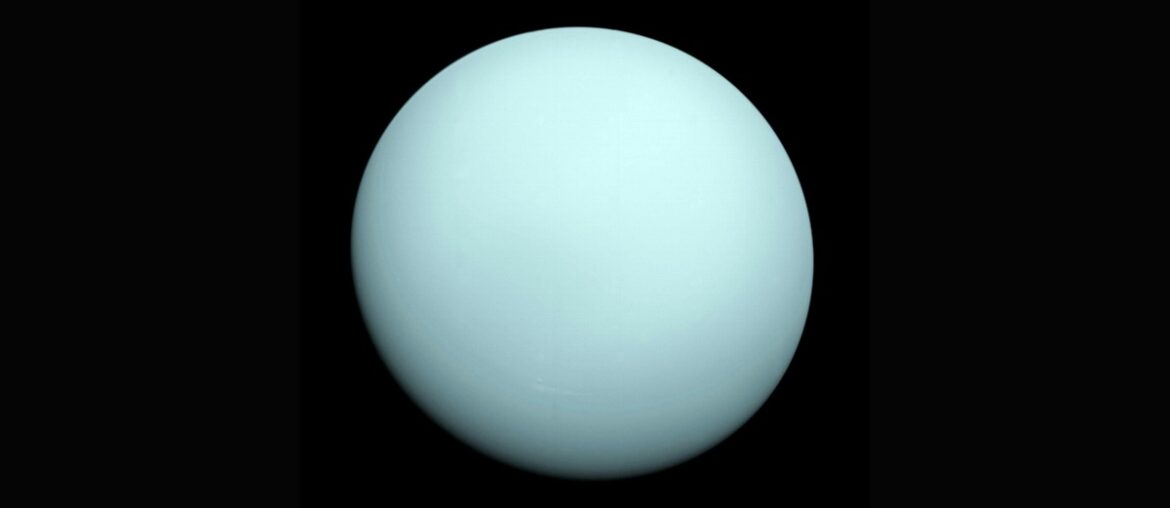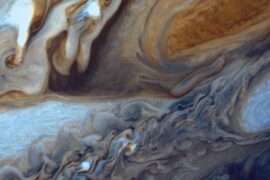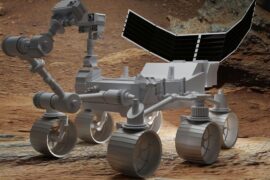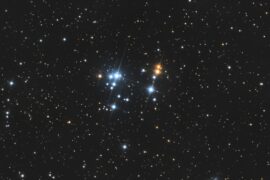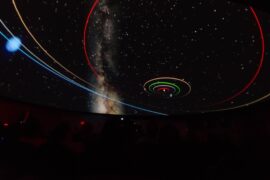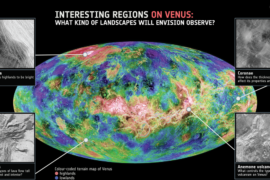On March 13, 1781, astronomer William Herschel spotted a faint, pale-blue disk that turned out to be a new planet: Uranus.
Uranus matters because it breaks many planetary expectations — tipped nearly on its side, cloaked in icy gases, and surrounded by narrow rings and a slate of odd moons. Its 84‑year orbit and extremes of temperature make it a laboratory for giant‑impact physics, atmospheric dynamics, and interpretations of the many Neptune-size worlds we now find around other stars. Below are 12 clear, memorable facts grouped into three parts: physical traits, the orbit/rings/moons, and exploration and scientific importance.
Strange Physical Traits of Uranus
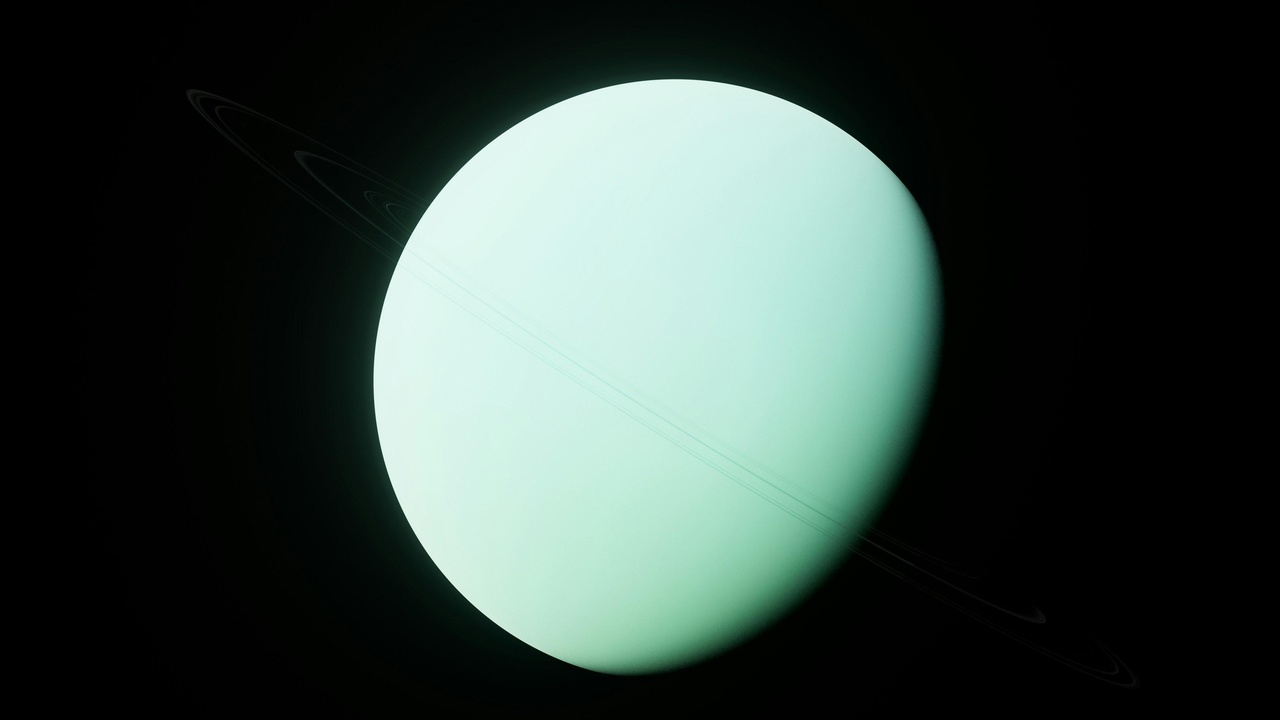
Uranus’s bulk properties are unusual compared with other planets: an extreme axial tilt, a cold, methane-rich atmosphere, and an interior dominated by ices rather than hydrogen-helium gas. Those traits give clues about violent early collisions, interior heat flow, and how ice giants form — information that helps decode many exoplanets of similar size.
1. Tilted Axis: Uranus spins nearly on its side
Uranus has an axial tilt of about 98 degrees, meaning it effectively rolls along its orbit instead of spinning upright. Planetary scientists interpret this extreme tilt as the likely result of one or more giant impacts early in the solar system’s history; numerical collision simulations in peer‑reviewed literature reproduce similar tilts when a Neptune‑mass body is struck by a large protoplanet (see NASA summaries of impact scenarios). The 84‑year orbital period translates to roughly 21 years per season, so each pole experiences decades of continuous sunlight or darkness — far different from Earth’s 23.5° tilt and four‑season cycle. That long seasonal forcing affects atmospheric circulation and provides a natural testbed for models of collision‑driven spin changes and exoplanet obliquity evolution.
2. An ice giant, not a gas giant — unique interior and mass
Uranus is classed as an “ice giant” with a mass of roughly 14.5 Earth masses (≈14.5 M⊕) and a mean radius near 25,362 km — about four Earth radii. Its bulk composition is dominated by water, ammonia, and methane ices mixed with hydrogen and helium rather than the massive hydrogen envelopes of gas giants like Jupiter. NASA and planetary science textbooks emphasize that this compositional mix creates different interior density profiles and heat transport mechanisms than Jupiter or Saturn. Comparing Uranus to Neptune (a similar ice giant) helps explain why many exoplanets in the Neptune‑size range behave differently than larger gas giants and why atmospheric retrievals for those worlds must account for volatile‑rich interiors.
3. Methane makes Uranus blue-green
Methane in Uranus’s upper atmosphere absorbs red wavelengths of sunlight, producing the planet’s characteristic blue‑green hue. Spectroscopic measurements (Hubble Space Telescope and ground‑based infrared observations) show an atmosphere composition roughly H2 ≈ 82%, He ≈ 15%, with methane on the order of a few percent in the upper layers where sunlight is scattered. Those spectra — with distinct methane absorption bands in the near‑infrared — also give temperature estimates near 49 K (≈ −224 °C) for the upper atmosphere. Detecting methane bands is a direct example of how remote spectroscopy reveals composition, cloud structure, and seasonal changes on distant worlds.
4. The coldest planetary atmosphere in the solar system
Uranus has the coldest measured planetary atmosphere, with minimum temperatures near 49 K (≈ −224 °C). That low temperature is surprising because Neptune, which orbits farther out, radiates more internal heat. Voyager 2’s thermal and radiometric measurements during the 1986 flyby, along with later telescope studies, indicate Uranus has an anomalously low internal heat flux. Scientists propose several explanations — from layered interiors that trap heat to the aftermath of a giant impact redistributing interior energy — and resolving this puzzle is a key goal for models of ice‑giant formation and evolution.
Orbit, Rings and Moons: Uranus’s Neighborhood
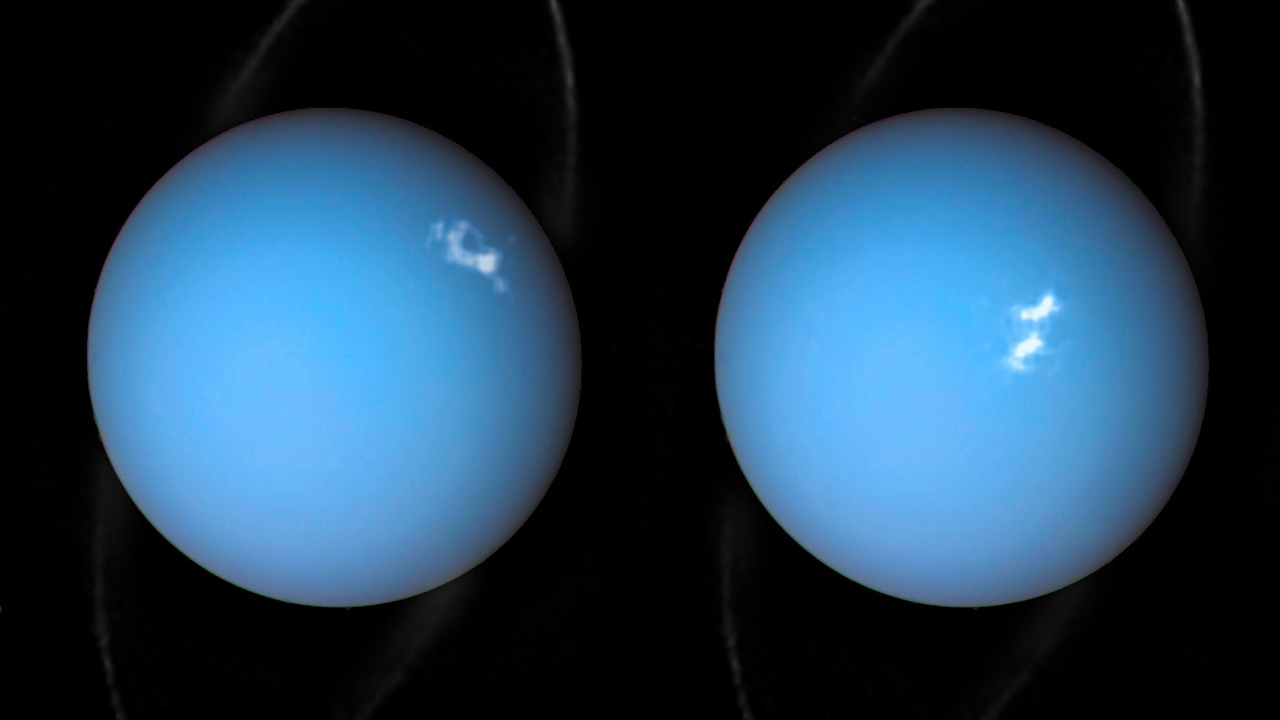
Uranus is surrounded by a compact ring system and at least 27 known moons, and its 84‑year orbit and sideways spin shape everything from ring dynamics to moon geology. Key discoveries came from stellar occultations, Earth telescopes, and the single close spacecraft visit in 1986.
5. A system of narrow, dark rings discovered in 1977
Uranus has 13 confirmed rings, first detected in 1977 during a stellar occultation observed by James L. Elliot and colleagues. Unlike Saturn’s broad, bright rings, Uranus’s rings are narrow and dark, with some denser arcs and sharp edges revealed by Voyager 2 imaging in January 1986. Observers infer ring particle sizes ranging from microns to meters, indicating a collisional and dynamical environment shaped by moonlets and shepherding effects. The rings serve as a natural laboratory for small‑body dynamics: they show how collisions, gravitational resonances, and meteoroid bombardment sculpt ring profiles over time.
6. Twenty-seven confirmed moons, from tiny to geological oddities
Uranus has 27 confirmed moons, with five major satellites: Miranda, Ariel, Umbriel, Titania, and Oberon. Voyager 2’s close encounters in 1986 produced revealing images of Miranda’s bizarre terrain — large coronae and cliffs such as Verona Rupes, estimated up to ~20 km high. The moons are named largely from Shakespeare and Alexander Pope, reflecting a mix of sizes and histories: some heavily cratered and ancient, others showing signs of tectonism or resurfacing. Studying this diversity helps reconstruct collisional histories and tidal interactions that shape satellite geology.
7. An 84-year orbit — very long seasons
Uranus orbits the Sun every ≈84 Earth years at an average distance of about 19.2 AU (≈2.87 billion km). Because of the ~98° axial tilt, that orbit produces seasons lasting roughly 21 years apiece, creating decades of polar daylight and darkness. These prolonged seasons influence atmospheric circulation, cloud formation, and observational planning: long‑baseline monitoring is required to separate seasonal effects from shorter‑term weather. Astronomers scheduling observations must often wait many years to sample certain seasonal configurations.
8. Fast winds and odd rotation patterns
Uranus completes a rotation in about 17.24 hours, and despite its sideways spin the planet exhibits strong winds — zonal jet speeds have been observed up to ~900 km/h. Voyager 2 recorded wind features during its 1986 flyby, and later Hubble monitoring tracked evolving storms and cloud tracers. The combination of rapid rotation, extreme obliquity, and variable solar illumination produces circulation patterns unlike those on Jupiter or Saturn, and interacting winds likely influence how the magnetosphere and auroral regions behave.
Exploration and Scientific Importance

Uranus is a high‑priority target because ice giants are common among exoplanets, yet our direct knowledge rests on a single flyby. A modern orbiter and atmospheric probe would answer questions about interior structure, composition, magnetospheric dynamics, and satellite systems — information with immediate relevance to interpreting dozens of Neptune‑size exoplanets.
9. Voyager 2: the only visitor so far (1986 flyby)
Voyager 2 performed the only close encounter with Uranus on January 24, 1986, returning the first detailed images and in‑situ measurements of the planet, rings, moons, atmosphere, and magnetosphere. Instruments on Voyager 2 (imaging, magnetometer, plasma detectors) revealed the rings, mapped major moons, detected wind patterns, and measured temperatures. But a single, fast flyby cannot probe deep atmospheric chemistry or internal structure. An orbiter together with an atmospheric probe could measure noble gas abundances, vertical composition profiles, and gravitational moments — critical data that Voyager 2 could not collect during its brief passage.
10. A strange, tilted magnetic field
Voyager 2’s magnetometer showed that Uranus’s magnetic field is highly tilted (about 59°) relative to its rotation axis and significantly offset from the planet’s center. That geometry produces a complex, time‑variable magnetosphere with unusual auroral patterns and plasma flows. Models based on Voyager 2 data and later theoretical work demonstrate how such an arrangement alters particle trapping and magnetospheric dynamics compared with Earth’s relatively well‑aligned dipole. Understanding this odd field sheds light on dynamo processes in ice‑rich interiors and on how magnetospheres behave under extreme tilt conditions.
11. A laboratory for ice-giant and exoplanet science
Thousands of exoplanets have been discovered, and a large fraction are Neptune‑size or smaller — making Uranus a nearby template for many extrasolar worlds. Data from Uranus help calibrate atmospheric retrieval techniques used with telescopes such as JWST and ground observatories: methane absorption, cloud chemistry, and heat transport measured at Uranus inform how we interpret exoplanet spectra. By tying interior and atmospheric models to a well‑observed local example, researchers can better infer composition and formation histories for distant ice giants.
12. High scientific payoff from future missions (orbiter + probe)
The 2023 Planetary Science Decadal Survey identified an ice‑giant flagship mission (to Uranus or Neptune) as a high priority. An orbiter plus atmospheric probe could measure interior structure via gravity and seismology, sample noble gases and isotopes to pin down formation scenarios, and map the magnetosphere and moons over many years. Such a mission would directly address gaps left by Voyager 2 and provide comparative data for exoplanet studies. While expensive and long‑lead, the unique science return — from formation constraints to exoplanet calibration — makes a strong case for planning and funding an ice‑giant mission in the coming decades.
Summary
Uranus surprises at every scale: a 98° tilt that creates 21‑year seasons, a methane‑rich atmosphere chilled to about 49 K, a compact set of dark rings discovered in 1977, and 27 moons including Miranda with 20‑km‑scale cliffs. Voyager 2’s January 24, 1986 flyby gave us the first close look, but many fundamental questions remain about interior heat, deep composition, and magnetospheric dynamics. Because ice giants are common among exoplanets, returning to Uranus with an orbiter and probe would offer outsized scientific payoff.
- Uranus’s ~98° axial tilt produces extreme seasons and offers a case study in giant impacts and obliquity evolution.
- Its atmosphere is the coldest measured (~49 K); methane shapes the blue‑green color and spectroscopic signatures used in exoplanet studies.
- Voyager 2 (1986) provided invaluable first data, but an orbiter plus atmospheric probe — recommended by the 2023 Decadal Survey — would resolve key unknowns about interior structure, composition, and moons.
- Studying Uranus improves interpretation of many Neptune‑size exoplanets, linking local measurements to distant observations.
Enjoyed this article?
Get daily 10-minute PDFs about astronomy to read before bed!
Sign up for our upcoming micro-learning service where you will learn something new about space and beyond every day while winding down.

